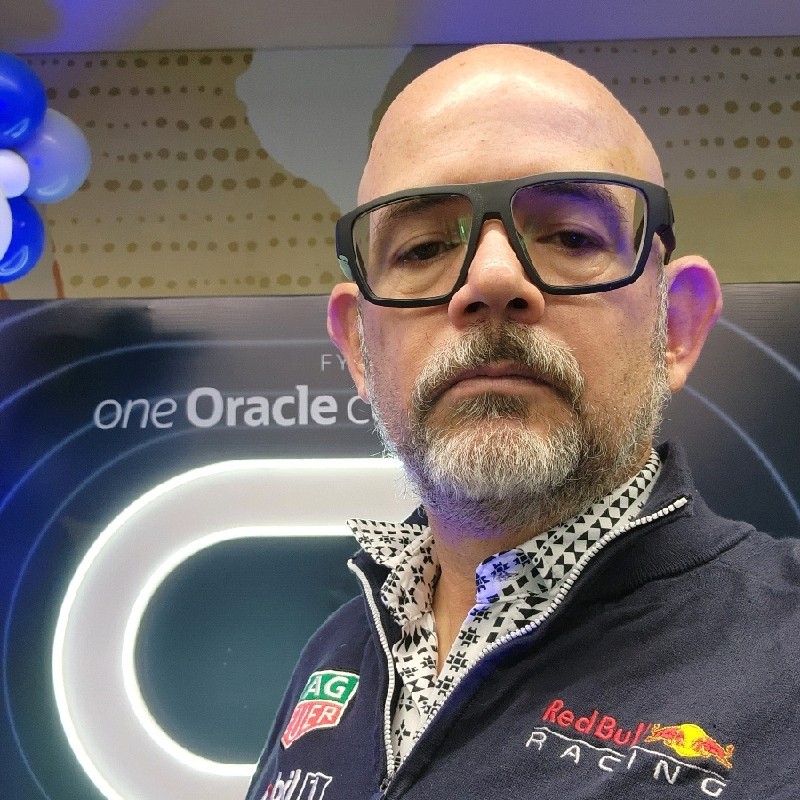FinOps for Data Center: FinOps Tooling Considerations
This Paper is Part 4 of a FinOps for Data Center series outlining how applying FinOps Principles—focused on operational expenditure (OpEx), detailed cost attribution, and FinOps Framework Capability-driven practices—enables organizations to align Data Center investment with business value. By providing timely, accurate financial insights, FinOps empowers executive leadership to make more informed executive decisions.
The FinOps for Data Center Series
- Part 1: FinOps for Data Center – Context for Creating a FinOps Practice Profile
- Part 2: FinOps for Data Center – Applying the FinOps Framework
- Part 3: FOCUS™ for Data Center – Structuring Data Center Cost and Usage Data
- Part 4: FinOps for Data Center – FinOps Tooling Considerations (You are here)
About This Paper
This document provides high-level, vendor-agnostic FinOps guidance for Data Centers, outlining the scope of FinOps practitioners’ roles, the application of the FinOps Framework, and relevant theoretical and practical considerations. While FOCUS™ is referenced, detailed data-level information will be addressed separately.
Who Should Read this Paper
This paper applies to FinOps practitioners who have been asked to manage technology spending that extends FinOps concepts beyond the scope of public cloud into Data Centers. Links to relevant material are contained in the Related FinOps Material section of the paper.
Prerequisites
An existing understanding of the FinOps Framework Domains and Capabilities for public cloud, along with being familiar with the content and concepts in Part 1: FinOps for Data Center – Context for Creating a FinOps Practice Profile, and Part 2: FinOps for Data Center – Applying the FinOps Framework.
Introduction and Purpose
A FinOps Scope refers to a segment of technology-related spending where FinOps Practitioners apply FinOps concepts. FinOps Scopes extend the Framework’s operating model to encompass intersecting areas of technology spend, particularly as the practice evolves to include activities in addition to public cloud.
According to the State of FinOps 2025 survey, 22% of practitioners are currently engaged in managing Data Center costs, with expectations rising to 36% by 2026—a 14% increase. These trends suggest that FinOps is increasingly being applied to broader areas of technology spending beyond public cloud services.
By collaborating with Core and Allied Personas, FinOps Practitioners may help shift organizational culture away from traditional finance, procurement, and technology silos toward a more integrated, data-driven approach that supports planning, cost analytics, and optimization.
The purpose of this paper is to explore the FinOps Scope for Data Center and to support existing FinOps Practitioners in understanding this area and the application of the FinOps Framework.
Data Center Definition & Characteristics
In the context of FinOps Scopes, “Data Center” is a broad term used to describe non-cloud IT services delivered from facilities either directly owned or managed by the client through contractual or service agreements. The Data Center scope includes all technology-related spending and decision-making activities associated with planning, acquiring, operating, and optimizing the physical and virtual infrastructure that supports an organization’s technology needs.
Read more about how a Data Center is defined for the purposes of this FinOps for Data Center series, the characteristics and special considerations related to private clouds — including approaches for the Data Center scope that could support the enhancement of traditional infrastructure management by applying FinOps principles to fixed-cost assets – in Part 1: FinOps for Data Center – Context for Creating a FinOps Practice Profile.
FinOps for a Data Center: Tooling Considerations
Similar to FinOps in the Public Cloud, FinOps for Data Center is still a data wrangling and presentation challenge.
From a tooling perspective, we think about tooling in two broad categories:
Data Center/Infrastructure Tooling
To support FinOps in the Data Center, you’ll need to identify and connect to tooling that captures deployment, usage, and potentially cost data for the underlying infrastructure. This tooling may be:
- Provided by your Data Center provider, or
- Installed and managed internally as part of your enterprise tooling stack.
These tools become your primary source of usage data, which may span multiple systems. Collaborate closely with Enterprise Architects and other knowledgeable stakeholders to map out what’s currently available.
Explore Tooling Across These Domains:
- Platform Monitoring
- Observability Tools
- Application Performance Monitoring (APM)
- Infrastructure Monitoring
Note: If your Data Center offers multiple services (e.g., compute, storage, networking), you may need to integrate multiple data sources to build a complete view. Start small—prioritize high-impact areas first—and remember the FinOps adoption model: Crawl, Walk, Run.
Data visualisation/Presentation Tooling
Once usage and deployment data is captured from monitoring and infrastructure tools, additional tooling is required to ingest, normalize, and present that data to FinOps practitioners and stakeholders across the organization.
These tools typically serve three core functions:
- Ingest data from multiple sources (e.g., monitoring systems, asset databases, financial systems)
- Transform and align the data—often mapping it to a common model such as FOCUS™
- Visualize and report insights to users across Finance, Engineering, Product, and Leadership
Tooling Considerations
You may find that raw deployment/usage data for Data Center is more readily available, as opposed to having a billing/cost export like what is available in the Public Cloud. However, like most things in the IT cost management arena, it is still a P x Q calculation. By pairing the deployment/usage data with a rate card or price sheet, you can manufacture or create a billing dataset to “do FinOps.” This may require an additional integration point to bring this data in and ensure your rate card is up to date.
Don’t forget to “follow the money” and determine whether there are any existing showback or chargeback processes for the Data Center in your organization. This helps you understand what tooling is already available or in use. You may discover well-established IT Financial Management tooling or practices that you can tap into or augment.
If you are approaching FinOps for Data Center, it’s possible that you’ve already had some success with Public Cloud. Therefore, consider whether you can integrate your Data Center cost and usage data into your existing FinOps toolset.
Part of the value in doing this is the ability to leverage metadata that you’ve likely already developed during your FinOps journey—such as service owners, organizational hierarchies, and cost centers. Additionally, integrating with existing tools allows you to achieve economies of scale through consolidated reporting.
Helpfully, most of the leading FinOps SaaS providers have now started to allow additional datasets to be brought in using the FOCUS™ format to enable exactly this kind of consolidated FinOps reporting. So, if your Data Center provider can publish data in this format—or your organization is willing to take on the effort to transform it into FOCUS™ format—you may realize significant synergies by integrating your Data Center with your Public Cloud cost and usage data. See the FOCUS™ for Data Center section for more information.
Note of caution: Be aware of how this integration may impact your subscription with your Public Cloud FinOps tooling. Many products charge based on the volume of spend ingested. Ingesting a year’s worth of Data Center cost and usage data could quickly consume your subscription allocation or trigger overage charges.
For those using more generic data visualization platforms, integration may be easier, and the tools may already be well-established within the organization—meaning you can bring in additional support without materially impacting any existing FinOps SaaS subscriptions.
In any scenario, ensure that you continue to apply sound data architecture principles to avoid creating an unmanageable and disjointed solution—even if intentions are good.
One final consideration is the Venn diagram of your users and stakeholders. In your organization, this may be close to a perfect circle—making onboarding and training easier, as users are already familiar with the tooling, terminology, and reporting structure. If your stakeholder group is different, view it as an opportunity to expand engagement. Bring advocates, case studies, and success stories to your FinOps for Data Center roadshow sessions to make the value real for your new audience and build credibility.
FinOps KPIs for Data Center
This section offers a listing of FinOps KPIs for Data Center that could be used by all organizations, regardless of Data Center Hardware provider.
Note: While not specifically for Data Center, there are additional FinOps KPIs listed on the FinOps Foundation’s website, some of which may also be applicable to FinOps for Data Center – http://finops.org/wg/finops-kpis/
- Calculate cost per business service across hybrid environments
- Develop resource efficiency unit metrics (e.g., cost per GB stored, cost per virtual CPU)
- Business unit metrics (e.g., cost per transaction, cost per tenant)
- Measure and optimize Data Center energy efficiency (PUE)
- Procurement: Key Metric: Procurement-to-Provisioning Lag Time
- Commitment: Key Metric: Commitment Utilization Rate
- CAPEX: Key Metrics: CAPEX ROI and OPEX Efficiency
- Facility: Key Metric: Facility Efficiency = IT Equipment Power / Total Facility Power * update PUE
- Optimization: Key Metric: Optimization ROI = (Cost Savings + Performance Gains) / Implementation Cost
- Cost Integration: Key Metric: Integration Completeness = (Integrated Cost Sources) / (Total Cost Sources) × 100%
- TCO: Key Metric: TCO per Workload = (Total Costs Over Lifecycle) / (Number of Workloads)
- Operational Complexity: Key Metric: Operational Load Factor = (FTEs × Hourly Rate) / (Managed Infrastructure Value)
- Sustainability: Key Metric: Sustainability Efficiency = (Workload Output) / (Environmental Impact) –
- Key Metric: FinOps Culture Index = (FinOps Initiatives Adopted) / (Total FinOps Opportunities) × 100
- Waste: Key Metric: Efficiency KPI = ($ amount of potential savings from identified Waste) / (Total IT Cost in a certain scope)
- Hybrid solutions: Key Metric: Hybrid Cost Efficiency = (Total Business Value) / (Combined Infrastructure Costs)
- Automation ROI: Key Metric: Automation ROI = (Cost Savings + Efficiency Gains) / (Implementation Cost)
Case Study: Practitioner Example
| Organization Background | This technology platform company focuses on providing the possibility for people to explore and discover new places, cultures, and experiences around the world. Their technology operates on a mix of public and private cloud, but also still has a large Data Center footprint. As their FinOps practice was embedded there was more demand to scale to a wider technology scope. |
| Case Study Summary | The FinOps team already played a crucial role in managing public cloud spend, while the Data Center spend was ‘invisible’ for engineering teams within the company. Therefore, the team was asked to leverage the FinOps capabilities and bring them to the Data Center space. This focused on:
Financial Insight and Ownership: Extend public cloud cost visibility for project teams on public cloud to Data Center spend to gain better financial insight and ownership over their Data Center expenditures. This allows the teams to drill down into their total infrastructure costs and take full ownership. Budgeting and Forecasting: There were synergies to be gained with combining the public cloud and Data Center forecasting capabilities. By leveraging the same tools, combining data to gain better predictions and reaching out to teams synchronously, the forecasting process became easier and more accurate for the internal teams. Optimization Opportunities: By extending visibility on the Data Center spend it has become easier for teams to visualize where optimization opportunities exist. Whereas teams were only able to optimize their cloud estate they are now also able to to identify cost-reduction opportunities on the Data Center side. Through these functions, the FinOps team not only managed public cloud expenditure but also started to optimize Data Center spending while at the same time fostering a culture of financial accountability and efficiency across project teams. |
| Challenge | While the company was in its transition to public cloud and had a mature FinOps practice, there was little visibility for the teams on the exact costs of running their services in the Data Center. This led to a clear disbalance between the visibility of costs on the public cloud side and the visibility on the Data Center side. Therefore, teams could essentially run their services ‘for free’ on the Data Center side, but were being charged for running services that were running on the public cloud. This made it that teams were inclined to run their services on the Data Center, not taking full advantage of the benefits of the public cloud. |
| Key Objectives | The Key Objectives in this case were threefold:
|
| Solution | The solution centered around three key components:
|
| Teams/ Disciplines Involved | Just like in public cloud collaboration in Data Center spend management is key. The same core and allied personas played a role in this case, but there was even more emphasis on the collaboration with the Finance stakeholders due to the large CAPEX investments that are usually required for Data Center investments. Next to that, the FinOps team played a crucial role here in bringing the FinOps knowledge and framework to maximize the business value of not only cloud but technology in general. |
| Challenges and Lessons Learnt | Two key challenges that were faced in this case and the lessons learnt were:
|
| Future Related Plans | In this case the future is aimed towards providing a true Total Cost of Ownership (TCO) picture of all technology spending. Not only adding Data Center spend but taking into account the other scopes as well to provide a real cost per transaction in the end. |
Related FinOps Resources
- The Scope of FinOps Extends Beyond Public Cloud (https://www.finops.org/insights/finops-scope/)
- FinOps Framework Scopes
(https://www.finops.org/framework/scopes/) - FinOps Scope for Data Center
(https://www.finops.org/framework/scope/data-center/) - FinOps Scopes: Cloud+
(https://www.finops.org/topic/scopes/)
Acknowledgments
Thanks to the following people for their work on this Paper:


Alessandro Bellini
Max Mara Fashion Group
Peter Keogh
Consultant
Christian de Wit
Booking.com
Keena Blunschi
American Express
Colin Jack
Flexera
Daniel Whitefield
Certero
David Gibbons
HSBC
David Lambert
Adobe
Fabian Mieloch
SERVICEWARE
Ian Foster
Marsh McLennan
James DeLoid
Oracle Cloud Infrastructure
Josh Bauman
Apptio, an IBM Company
Marcel Paap
Rabobank
Marcos Palma
Oracle
Mike Coates
Emirates
Milton Campomanes
Oracle
Natalie Daley
HSBC
Pedro Alves Batista
The Home Depot
Salomé Keet
FNB South Africa